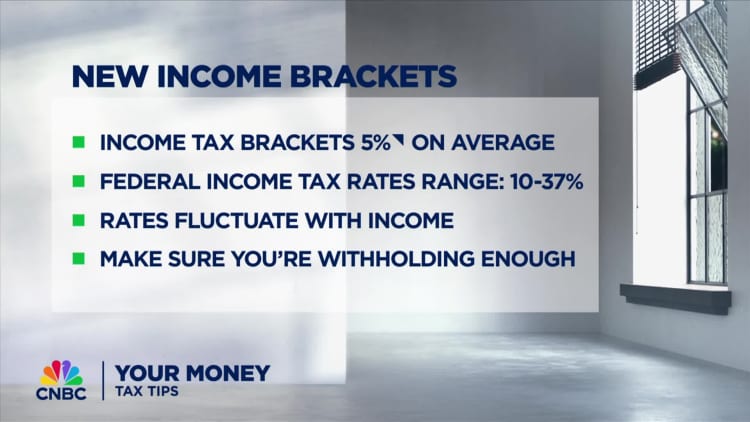Violetastoimenova | E+ | Getty Images
House lawmakers are weighing relief for a “marriage penalty” that impacts the federal deduction limit on state and local taxes, known as SALT. While the bill doesn’t have broad support, it could help shape future tax policy discussions, experts say.
Enacted via the Republicans’ 2017 tax overhaul, there’s currently a $10,000 cap on the federal deduction for SALT, which has been a key issue for certain lawmakers in high-tax states, such as New York, New Jersey and California. Without changes from Congress, the $10,000 limit will sunset after 2025 and there will be no deduction cap.
Known as the SALT Marriage Penalty Elimination Act, the House bill would double the limit to $20,000 for married couples filing together with an adjusted gross income of less than $500,000. The change would be temporary and retroactive, starting after Dec. 31, 2022, and before Jan. 1, 2024.
Since 2018, filers who itemize deductions can’t claim more than $10,000 for SALT, which includes property and state income taxes âand some lawmakers argue this penalizes married couples who file joint returns since each taxpayer could claim $10,000 as single filers.
Lawmakers on Wednesday afternoon will cast a procedural vote on the bill for future House consideration.Â
“There hasn’t been a lot of consensus on what the design of the SALT cap may look like post-2025,” said Garrett Watson, senior policy analyst and modeling manager at the Tax Foundation. “This helps establish the beginning of the conversation.”
As discussions continue about expiring Tax Cuts and Jobs Act provisions, the SALT cap “is going to be one of the biggest sticking points,” he said.
SALT primarily benefits wealthy households
While supporters of SALT reform have touted the benefit for middle-class families, the current bill would primarily benefit wealthier households, according to a new Tax Policy Center analysis.
If enacted, more than 90% of the benefit from the temporary change would accrue to households making between $200,000 and $1 million, the findings show.
“The wealthy already came out pretty well from the Tax Cuts and Jobs Act and this is just giving them a little bit extra,” said John Buhl, senior communications manager at the Urban Institute.
The wealthy already came out pretty well from the Tax Cuts and Jobs Act and this is just giving them a little bit extra.
John Buhl
Senior communications manager at the Urban Institute
There were similar findings from a recent Tax Foundation analysis, which noted that taxpayers who itemize deductions and have more than $10,000 in SALT expenses are generally higher earners.Â
The Tax Foundation analysis found the proposal would boost after-tax income for the top 20% of taxpayers by 0.3%, while the bottom 40% of households “would see little change.”





/cdn.vox-cdn.com/uploads/chorus_asset/file/25429884/2024260145.jpg)


